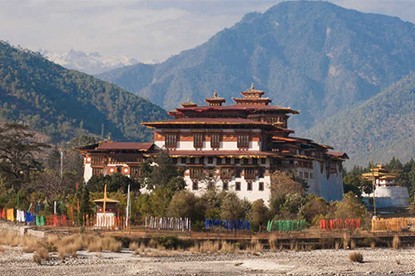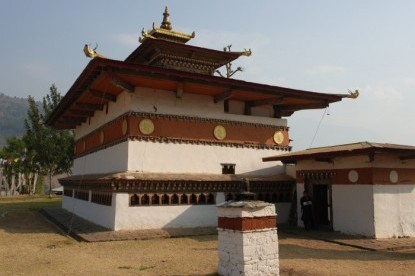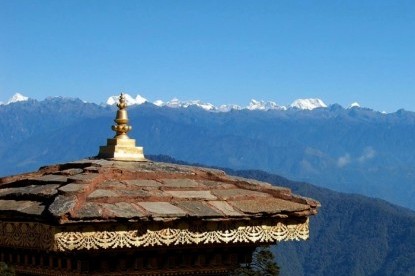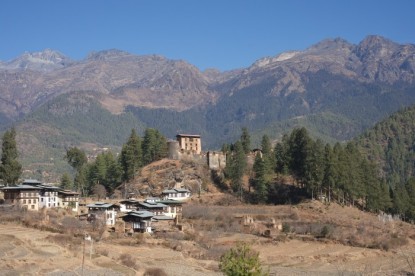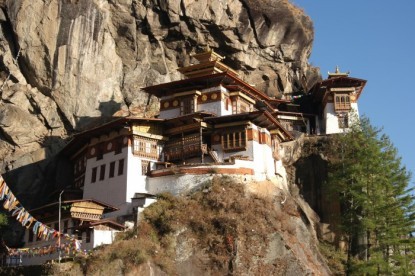Druk Path Trek is a short five day trek which leads from Paro to Thimphu or vice versa, cr...
ReadmoreBhutan offers many opportunities for trekking with its splendid scenic beauty, lofty mountains and deep valleys untouched by modernization. Trekking in this Himalayan kingdom is a wonderful experience for any one who enjoys hiking and camping in rich natural habitats, meeting indigenous people and their cultures. It is quite different from trekking in Nepal where you may meet other trekkers at every bend. The country ranges from the dense forest of subtropical jungles to the alpine shrubs, endowed with a wide spectrum of Himalayan flora and fauna. The land is thinly populated with scattered settlements. A person may walk for several days before sighting a village.
Although the Himalayas have always held a long-standing attraction to the western world it is a recent development here. Bhutan is one of the most exclusive and rare destinations for any tourist. The unique culture, architecture, lofty snowcapped peaks, fortress like dzongs, Lamaist Buddhist traditions and its friendly people leave an everlasting impression on the visitor.
Like all tours to Bhutan, trekking can only be organized through a registered agency in Bhutan. The same daily costs apply as with any tours ($200 per person per night) and includes all the services, accommodation, meals, guide, pack animals, etc.
There are a choice of 4 to 25 (or more) day treks. The 7 to 10-day trek to the base of Chomolhari, the sacred mountain of Bhutan, is one of the most popular hike in Bhutan. For those looking for a shorter trek the 5-day Druk Path trek is a good choice. Bumthang and Lhunthse areas offer easy to moderate trekking for those looking for more of a cultural experience. And for those looking for challenging treks the Laya, Lunana and Snowman treks offer some of the remotest and demanding trekking anywhere in the Himalayas.
TREKKING SEASON
The best periods for trekking in Bhutan are October-November and March-May for all high altitude treks going over 4000 meters. Some the shorter treks (Druk Path, Bumthang, Gangtey) can be undertaken anytime from October to May through the winter. In the autumn clear warm days prevail affording the best mountain views. In the spring mixed weather pattern prevail with clear spells followed by occasional thunder showers and light rain. Spring is best for flowering rhododendrons (which Bhutan is famous for) along with magnolias and other flowering plants.
A DAY ON TREK
A trekking day usually consists of five to seven hours of walking. Pack animals, ponies, and yaks for the higher altitude treks, are provided to porter provisions, baggage and equipment. All necessary camping and kitchen equipment is provided and included in the trek cost.
All trekking parties are accompanied by a trained guide, a cook, an assistant and pack animal. At least one riding pony is always taken along just incase it is need. The support crew walks ahead of the trekking party each day and pitches camp before the trekkers arrive. A warm cup of tea or coffee waiting in the dinning tent is a most welcome treat after a days trek. All meals are carefully planned and prepared. Breakfast and dinner are served freshly prepared at camp and includes a choice of, at least, four dishes. During the day a picnic lunch is served at a pleasant and scenic place. All cooking and cleaning chores are taken care of by our trek staff so you can enjoy the trek fully.
HIGH ALTITUDE SICKNESS
Altitude sickness can pose a problem for trekkers crossing the high passes. To counter this all our itineraries include appropriate acclimatization days. Almost all of the trek routes in Bhutan go above 3,000 meters. People who suffer from heart, lungs, high blood pressure, or any such diseases, should not join these treks. Everyone who intends to trek in Bhutan should take up a regime of physical fitness by walking and hiking in hilly terrain regularly and take up such exercise as up (and down) stair walking, jogging, swimming, cycling or other forms of exercise. Please remember trekking is a physically demanding activity and if you are in good condition you will enjoy the trek a lot more.
WHAT TO BRING
Things you would need to bring on trek include a warm sleeping bag, carrymat or Thermarest camping mattress, well broken-in trekking boots, caps/hats, sun glasses, sun block, flashlight, insect repellent, personal toiletries, medicine/first aid, rain gear, warm jacket, backpack, etc. A comprehensive Per Departure Information including a detailed list of clothing and personal equipment will be provided once you confirm to trek with us in Bhutan.





